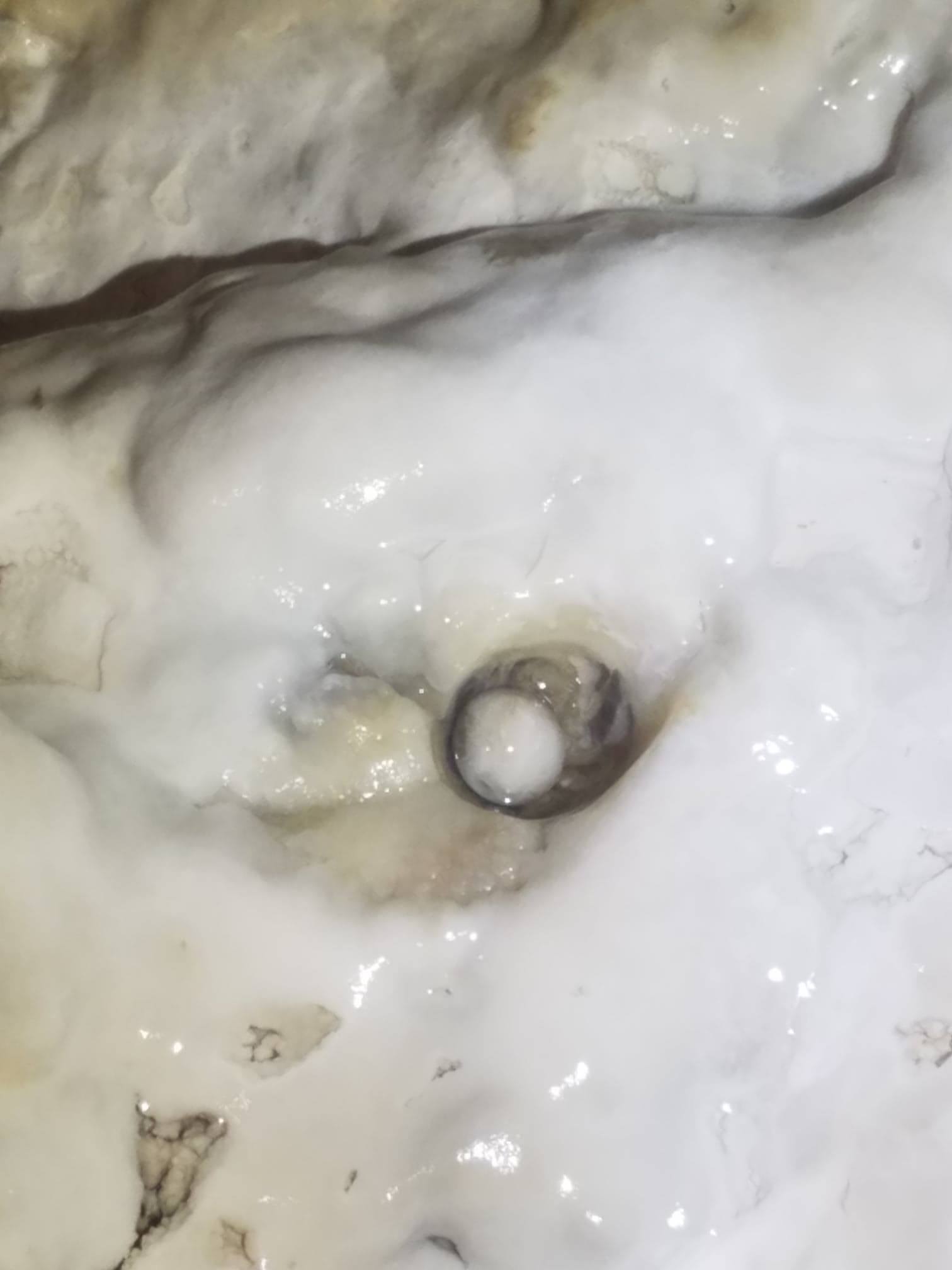Do you know some caves make pearls?
As defined by Wikipedia, a cave pearl is a small, usually spherical, speleothem (cave formation) found in limestone caves. Cave pearls are formed by a concretion of calcium salts that form concentric layers around a nucleus. Exposure to moving water polishes the surface of cave pearls, making them glossy; if exposed to the air, cave pearls can degrade and appear rough.
Cave pearls form when water dripping into a cave loses carbon dioxide and precipitates calcite. A cave pearl forms when the water is moving too vigorously to form a stalagmite. A nucleus of matter (such as a grain of sand) becomes coated with calcite, and the current then provides rotation to the nucleus in such a way that it is coated evenly. In this manner, concentric layers build up over time, in much the same way that a biological pearl forms within a mollusk. Other cave pearl shapes include elliptical, hexagonal, cylindrical, and cubical.
In the video, you can see there is a “pearl” forming inside an indention on a small formation inside Cumberland Caverns. Cave pearls do not need to collect in a ‘bowl’ in order to grow. As a matter of fact, two caves have an abundance of pearls scattered all along their flat pathways, the Cave of Marbles in Mexico and The Rookery at Carlsbad Caverns in New Mexico. Today, it is illegal to remove any items from caves, but at one time the cave pearls were so plentiful at Carlsbad, they were given to guests as souvenirs.
What amazing discoveries will you make 333’ below the surface?
Cumberland Caverns-where adventures run deep!


